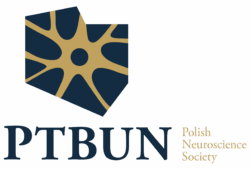References:
1. Brändle SM, et al. Cross-reactivity of a pathogenic autoantibody to a tumor antigen in GABAA receptor encephalitis. Proc Natl Acad Sci U S A., 2021. doi: 10.1073/pnas.1916337118
2. Bracher A, et al. An expanded parenchymal CD8+ T cell clone in GABAA receptor encephalitis. Ann Clin Transl Neurol., 2020. doi: 10.1002/acn3.50974
A disclosure of any potential conflicts of interest: None
References:
1. Sabater L, et al. A novel non-rapid-eye movement and rapid-eye-movement parasomnia with sleep breathing disorder associated with antibodies to IgLON5: a case series, characterisation of the antigen, and post-mortem study. Lancet Neurol., 2014. Erratum in: Lancet Neurol. 2015. doi: 10.1016/S1474-4422(14)70051-1
2. Gaig C, Sabater L. New knowledge on anti-IgLON5 disease. Curr Opin Neurol., 2024. doi: 10.1097/WCO.0000000000001271
A disclosure of any potential conflicts of interest: None
References:
1. Malek N, Gladysz R, Stelmach N, Drag M. Targeting Microglial Immunoproteasome: A Novel Approach in Neuroinflammatory-Related
Disorders. ACS Chem Neurosci. 2024 Jul 17;15(14):2532-2544. doi: 10.1021/acschemneuro.4c00099. Epub 2024 Jul 6. PMID: 38970802; PMCID:
PMC11258690.
2. Gladysz R, Malek N, Rut W, Drag M. Investigation of the P1′ and P2′ sites of IQF substrates and their selectivity toward 20S proteasome subunits. Biol Chem. 2022 Nov 16;404(2-3):221-227. doi: 10.1515/hsz-2022-0261. PMID: 36376064.
A disclosure of any potential conflicts of interest: None
References:
1. Trojan E, et al. The N-Formyl Peptide Receptor 2 (FPR2) Agonist MR-39 Improves Ex Vivo and In Vivo Amyloid Beta (1-42)-Induced Neuroinflammation in Mouse Models of Alzheimer’s Disease. Mol Neurobiol., 2021. doi: 10.1007/s12035-021-02543-2
2. Trojan E, Frydrych J, Lasoń W, Basta-Kaim A. Prenatal stress increases the risk of the FPR2-related dysfunction in the brain’s resolution of inflammation: a study in the humanized APPNL−F/NL-F mouse model of Alzheimer’s disease. Curr Neuropharmacol., 2025. doi: 10.2174/011570159X345385241004060055
A disclosure of any potential conflicts of interest: None
